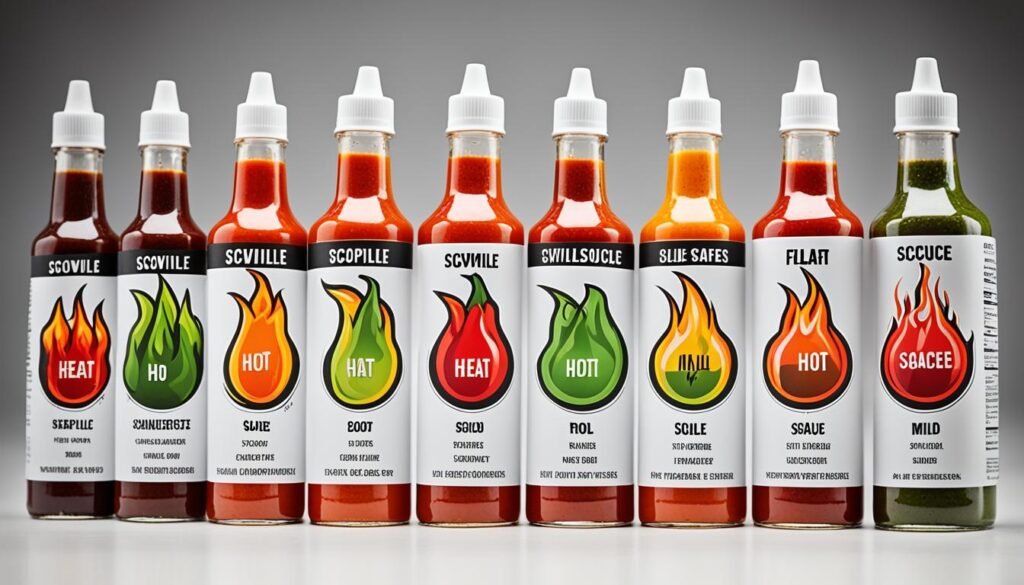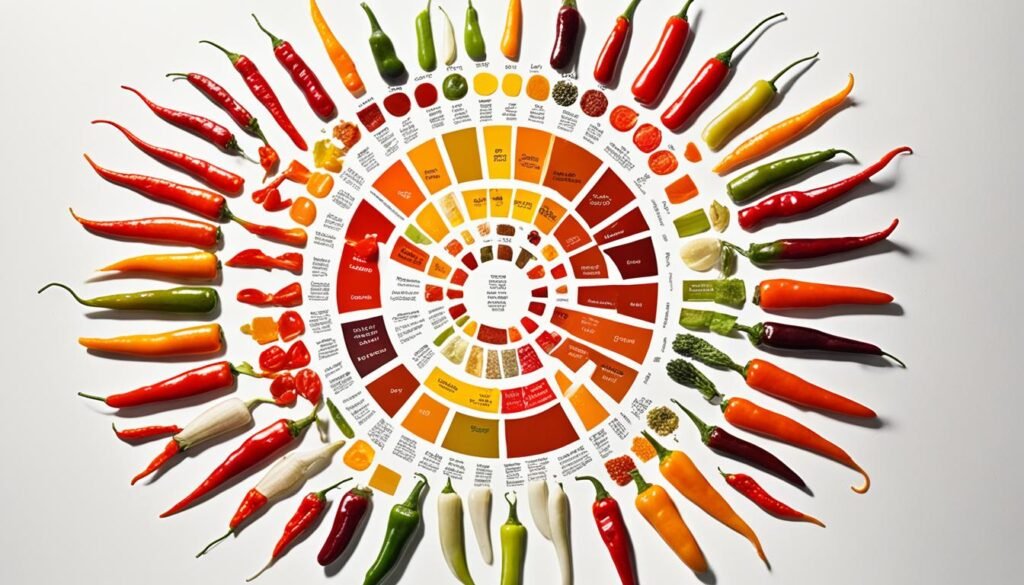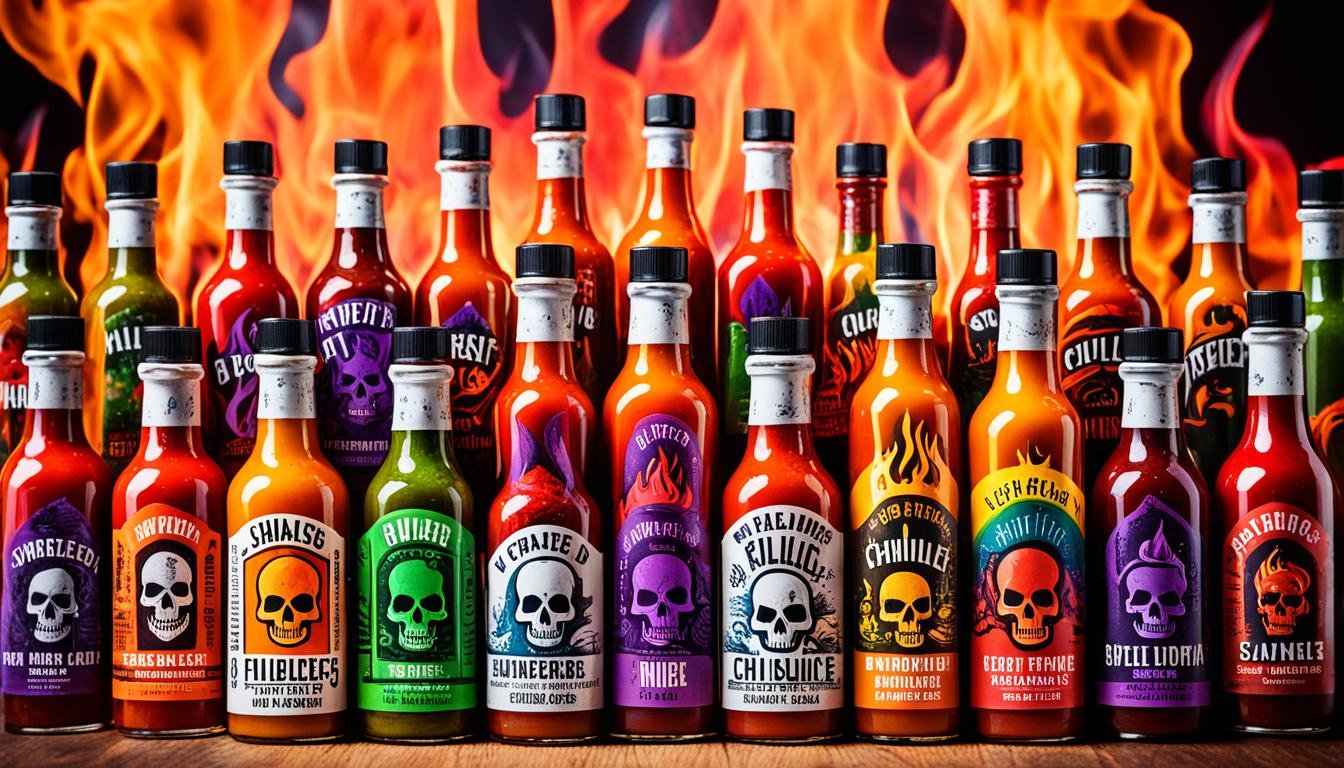Types of Hot Sauce: Exploring the Fiery Spectrum of Flavors
Are you a big fan of hot sauce, or are you just getting into it? Today, we see a wide range of SIANG JI ASIA SAUCE Types of Hot Sauce, each representing different cultures. For example, you can try the smoky chipotle or the zesty habanero. These sauces promise a journey of diverse flavors that excite your senses and spark new food adventures. So, what’s the story behind these sauces, and how did they become so popular globally? We will find out about the interesting beginnings and growth of Types of Hot Sauce that win over spicy food lovers worldwide.
Key Takeaways
- The types of hot sauce offer a diverse spectrum of flavors, from smoky and pungent to citrusy and fruity.
- Chili peppers, the heart of hot sauces, have a rich history and cultural significance dating back to ancient civilizations in the Americas.
- The global spread of chili peppers, following the Columbian Exchange, led to the creation of various regional hot sauce varieties that reflect local ingredients and culinary traditions.
- Hot sauces are more than just a condiment; they are a reflection of cultural identity and a testament to the ingenuity of cooks and food artisans worldwide.
- Exploring the types of hot sauce can take you on a thrilling journey of flavor discovery, where the heat is just the beginning of a complex and rewarding taste experience.
Types of Hot Sauce – The Origins and Evolution of Hot Sauce
The story of chili peppers and hot sauces goes back for centuries. It spans across the globe. These spicy condiments are now a big part of many cuisines.
Ancient Roots and Global Spread
The use of chili peppers in hot sauce began thousands of years ago. This started in the Aztec times. They used it not just for its taste but also for its health benefits.
The idea of using chili peppers in sauces then spread worldwide. This was due to the Columbian Exchange. People from different cultures started mixing chili peppers into their foods.
One of the first hot sauces in the U.S. was Tabasco sauce. The McIlhenny family from Louisiana made it in 1868. This sauce was made to last long and add flavor.
Over time, hot sauce changed a lot. It now comes in many flavors and heat levels. In Louisiana, Louisiana hot sauce is famous for its medium heat. In Mexico, sauces with jalapeños and serranos are popular. They are used in many dishes.
“The history of hot sauce is a testament to the enduring human love for bold, flavorful condiments that can transform even the simplest of dishes.”
From long ago to today, hot sauce has made its mark worldwide. It shows the variety of tastes people enjoy.
Types of Hot Sauce – The Science Behind the Heat
Understanding hot sauce means knowing its spicy science. The Scoville scale measures how hot peppers and Types of Hot Sauce are. Wilbur Scoville created it in 1912 to show how much capsaicin gives peppers their kick.
The Scoville Heat Units (SHU) are used to rate spiciness on the Scoville scale. The more SHU, the hotter the pepper or Hot Sauce. This helps people pick the right level of spiciness for their tastes.
The old Scoville scale tested heat by letting people taste samples. They’d mix the pepper extract with sugar water until it wasn’t spicy. The level of dilution set the SHU. Now, technology like high-performance liquid chromatography figures out SHU by checking the capsaicin directly.
| Pepper Variety | Scoville Heat Units (SHU) |
|---|---|
| Bell Pepper | 0 SHU |
| Banana Pepper | 100-900 SHU |
| Jalapeño Pepper | 2,500-8,000 SHU |
| Habanero Pepper | 100,000-350,000 SHU |
| Carolina Reaper | 1,400,000-2,200,000 SHU |
The Scoville scale is key for hot sauce fans. It helps people understand how spicy different Types of Hot Sauce are. Knowing the Scoville heat units lets them pick sauces that match their spice tolerance.

“The Scoville scale is the universal language of heat, allowing us to navigate the fiery realm of Types of Hot Sauce with confidence and culinary adventure.”
Types of Hot Sauce: Exploring the Fiery Spectrum of Flavors
The world of types of hot sauce is diverse and exciting to explore. It ranges from the smoky notes of chipotle to the bright, fruity taste of habanero. Each hot sauce variety brings a unique flavor, reflecting its cultural and local roots.
Regional Varieties and Cultural Influences
In Mexico, chipotle sauces showcase the country’s rich culinary history. The Caribbean is famous for its hot, fruity habanero sauces. And, Asia offers the famous, garlic-rich Sriracha that combines spice and flavor perfectly.
Around the world, cultural heritage greatly influences hot sauce flavor profiles. For instance, Africa’s peri peri chilies bring intense heat and flavor to their sauces. Each region’s unique ingredients and traditions make their types of hot sauce stand out.
| Region | Signature Hot Sauce | Flavor Profile |
|---|---|---|
| Mexico | Chipotle | Smoky, earthy |
| Caribbean | Habanero | Fruity, fiery |
| Thailand | Sriracha | Garlic-forward, balanced heat |
| Africa | Peri Peri | Intensely flavorful, fiery |
Exploring types of hot sauce is not just tasty; it also uncovers unique cultures. It’s a journey that delights anyone who loves flavorful food, offering something for every taste preference.

Types of Hot Sauce – Crafting the Perfect Blend
Creating hot sauce is a complex art. It blends flavors, heat, and preservation perfectly. If you love hot sauce or want to try making your own, knowing the right ingredients and processes is key. This knowledge will help you make a unique, tasty hot sauce.
Ingredients: The Spicy Foundation
The foundation of a great hot sauce is its ingredients. The blend includes chili peppers for heat and fruits, herbs, and spices for flavor. Each part is vital for the flavor profile. Varieties like jalapeños and ghost peppers add different heat levels and tastes.
Pair these peppers with flavors like citrus, garlic, or fruits. This mix makes a balanced hot sauce, appealing to many tastes.
Fermentation: Unlocking the Complexity
Using fermentation is a traditional yet innovative way to make hot sauce. This process not only keeps the sauce but makes it tastier. As ingredients ferment, they transform, creating deeper flavors. This approach is often seen in family recipes, showing cultural pride.
Preservation: Ensuring Longevity
Besides fermentation, modern methods keep hot sauces safe and tasty. These techniques include cooking and adjusting pH levels. They make sure your hot sauce lasts. So, you can enjoy your sauce long after you make it.
Whether following a family recipe or daring to make your own, grasp the importance of ingredients, fermentation, and preservation. These elements help create a special sauce. It will make every meal better and please your senses.
“The creation of hot sauce is an art, balancing flavors and heat to achieve the perfect blend.”
Conclusion
The world of Types of Hot Sauce is both diverse and tasty. Each hot sauce has a unique story through its ingredients and heat. Whether you love the heat of habanero or the sour of vinegar hot sauces, there’s one for you.
Types of Hot Sauce go beyond simple condiments. They open doors to exciting food adventures from around the globe. These spicy sauces are now kitchen staples, making meals exceptional for diners everywhere.
Exploring hot sauces means diving into history and science. It’s a journey with endless discoveries. With different local flavors and special blends waiting, the Types of Hot Sauce world is yours to explore. Let your taste buds lead you to amazing food experiences.



